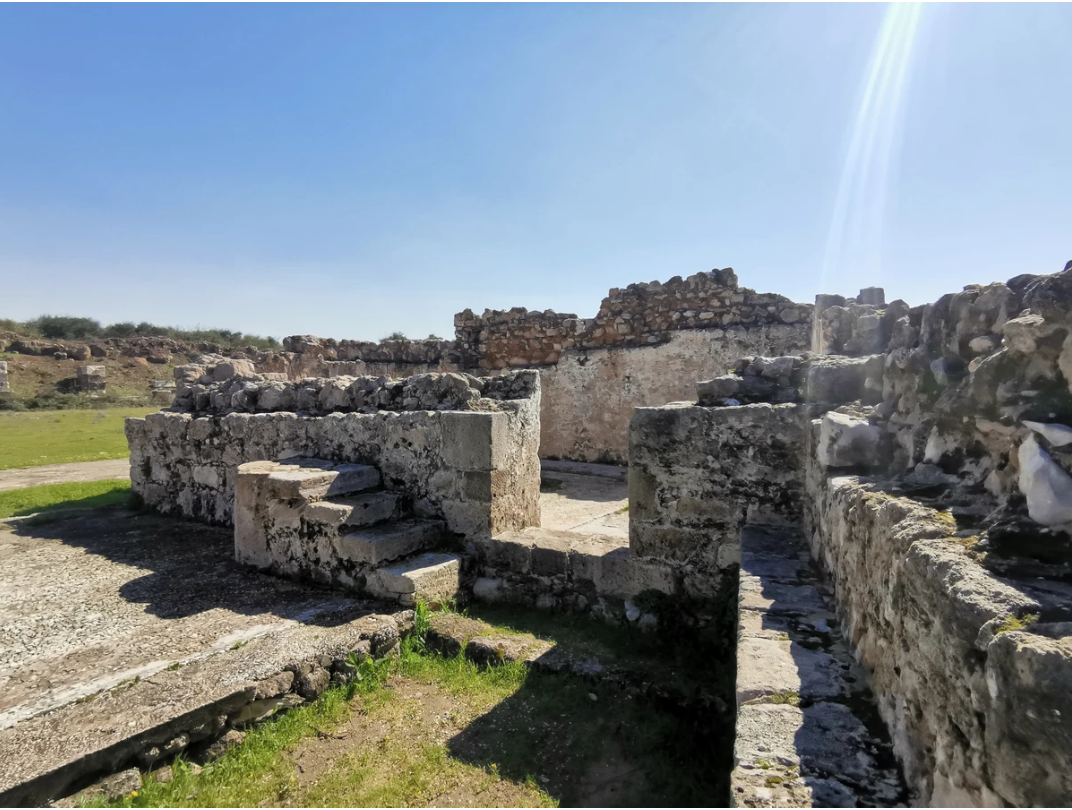Tyre features the remnants of a Medieval chapel, discovered in the 1960’s excavations. It is an important monument as it covered at one point a stone on which Jesus is believed to have sat on during his visit to the city.
Toponym
Ecclesiola, a designation used by the Frankish priest Rorgo Fretellus of Nazareth that means a small church or chapel.
The Chapel Of The Savior, a designation used by Medieval and modern historians based on the assumption that it was built on top of the rock where the Savior (Jesus) sat.
Historical background
The chapel is believed to have been built around the 1130s based on a unknown pilgrim text that records the event: “Before Tyre is that stone on which they say Jesus sat. It remained unharmed from His time until the expulsion of the gentiles (Muslims) from the city; but afterwards, it was damaged by the Franks and also by the Venetians. Over its remains, on its own site, a certain church in honor of the Savior has been begun (incoata est)”.
Other texts also testified to the event during that period.
The chapel was heavily damaged during the 1202 earthquake and was restored during the excavations in the 1960’s.
The Stone
Tyre had three stones that were mentionde as the place where Jesus sat and preached his followers.
The most common stone in question was located at El Bass archaeological site. At an unknown date, a large part of the stone has been removed by the Venetians and taken to Venice where it was seen at one point in St. Mark’s Cathedral.
The stone was at the center of the chapel, facing the altar, and supported at one point a Roman era-column. The remaining parts of the stone were taken by Medieval visitors who chopped away pieces to carry as souvenirs.
The Chapel
The chapel is erected at the south-west side of Tyre’s Roman-era hippodrome.
It is a single-celled structure, accessible through a single doorway.
The chapel has one nave with a rounded apse and encircled by 2m heigh walls which thickness vary between 0.5m and 1m, equipped with small benches where the visitors sat.
The floor of the nave is largely formed by white mosaics which represent the original paving of the hippodrome’s spina (a low wall that divides the course).
On the left side of the doorway, four stone steps lead up to the top of a section of a column-drum set in the ground. Its use was most likely an open-air pulpit from which a preacher would stand and address the visitors.
The most impressive part of the chapel is the plaster that covers its interior walls, and that holds hundreds of graffitis which include different symbols such as crosses, shields and ships, as well as the names of Crusader knights and high ranking officers.
Karim Sokhn
Tour Operator & Tour Guide
References:
A Crusader Chapel In The Hippodrome Of Tyre, Archaeology and History In The Lebanon, Issue Twenty, Autumn 2004







